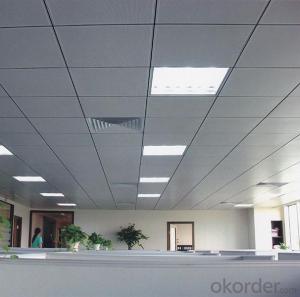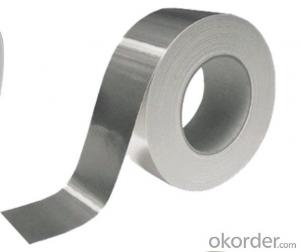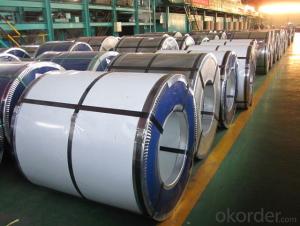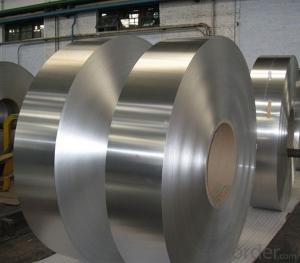Painting Aluminum Trim Coil
Painting Aluminum Trim Coil Related Searches
Led Light Bulbs For Ceiling Fixtures Led Lamps For Ceiling 42 In Ceiling Fan With Light Aluminum Coil Stock For Gutters Aluminum Foil For The Grill Hole Saw For Aluminum Plate Aluminum Tread Plate For Trailer Bow Plate For Aluminum Boat Aluminum Foil For Grow Room Aluminum Foil For Joint PainHot Searches
Stock Price For Aluminum Aluminum Coil Stock For Sale Aluminum Gutter Coil For Sale Used Aluminum Scaffolding For Sale 1/4 Aluminum Plate For Sale Aluminum Bar Stock For Sale Aluminum Round Stock For Sale Aluminum Diamond Plate For Sale Aluminum Scaffolding For Sale Craigslist 6061 Aluminum Plate For Sale Aluminum Dock Plate For Sale 7075 Aluminum Plate For Sale Aluminum Tread Plate For Sale Aluminum Checker Plate For Sale Aluminum Plate For Sale Near Me Plate Aluminum For Sale Aluminum Plate For Sale Aluminum Square Stock For Sale Aluminum Flat Stock For Sale Billet Aluminum Stock For SalePainting Aluminum Trim Coil Supplier & Manufacturer from China
Okorder.com is a professional Painting Aluminum Trim Coil supplier & manufacturer, offers integrated one-stop services including real-time quoting and online cargo tracking. We are funded by CNBM Group, a Fortune 500 enterprise and the largest Painting Aluminum Trim Coil firm in China.Hot Products
FAQ
- The production of HVAC components relies heavily on the use of aluminum coils, which play a crucial role in the process. These coils are utilized in HVAC systems to facilitate heat transfer, contributing to both heating and cooling applications. In air conditioning units and heat pumps, aluminum coils are commonly employed within HVAC systems. They form an integral part of the refrigeration cycle, enabling the transfer of heat from one area to another. Acting as the key component in the heat exchanger, the coils are responsible for absorbing heat from indoor air during the cooling process, or releasing heat into indoor air during heating. The process commences with the circulation of refrigerant, a substance that passes through the coils, absorbing and releasing heat. When the HVAC system is in cooling mode, the aluminum coils function as an evaporator. Warm air from the indoor space passes over the coils, and the refrigerant within absorbs the heat, effectively cooling down the air. This cooled air is then circulated back into the room, providing a comfortable environment. Conversely, during heating mode, the aluminum coils operate as a condenser. The refrigerant, having absorbed heat from the external environment, flows through the coils. The cooler air from the indoor space moves over the coils, causing the refrigerant to release its heat. This heat is then distributed throughout the room, ensuring a warm and cozy atmosphere. The utilization of aluminum coils in HVAC systems offers numerous advantages. Aluminum is lightweight, enhancing the portability and ease of installation of HVAC units. Additionally, aluminum possesses excellent thermal conductivity, enabling efficient heat transfer. As a result, energy efficiency is improved, leading to reduced operating costs of the HVAC system. Furthermore, aluminum coils exhibit high resistance to corrosion, ensuring their durability and longevity. They can withstand harsh environmental conditions, including humidity and exposure to chemicals, without deteriorating. This makes aluminum coils a reliable and cost-effective choice for HVAC manufacturers. In conclusion, aluminum coils play an indispensable role in the production of HVAC systems, facilitating efficient cooling and heating functions through the process of heat transfer. Their lightweight nature, excellent thermal conductivity, and resistance to corrosion contribute to the overall performance, energy efficiency, and durability of HVAC units.
- Yes, aluminum coils can be welded. Aluminum is a highly weldable material and is commonly used in various industries for its lightweight and corrosion-resistant properties. There are several welding methods that can be used to join aluminum coils, including TIG (tungsten inert gas) welding, MIG (metal inert gas) welding, and laser welding. However, it is important to note that welding aluminum can be more challenging compared to other metals due to its high thermal conductivity and low melting point. Therefore, proper welding techniques and equipment, such as using specialized aluminum welding wire and shielding gases, are necessary to ensure successful and high-quality welds.
- Yes, aluminum coils are suitable for heat sinks. Aluminum is a popular choice for heat sinks due to its excellent thermal conductivity and low cost. The high thermal conductivity of aluminum allows it to efficiently transfer heat away from a heat source towards the fins of the heat sink, where it can be dissipated into the surrounding environment. Additionally, aluminum is lightweight and easily formed into various shapes, making it a versatile material for heat sink applications. Overall, aluminum coils are a suitable choice for heat sinks, providing effective heat dissipation and cost-effectiveness.
- Yes, aluminum coils can be used for radiation shielding. Aluminum is a commonly used material for radiation shielding due to its high atomic number and density, making it effective at absorbing and scattering radiation. Aluminum can effectively shield against a wide range of radiation types, including gamma rays and X-rays. Additionally, aluminum is a lightweight and malleable material, making it easy to work with and suitable for various applications where radiation shielding is required, such as in medical imaging, nuclear power plants, and aerospace industries.
- I want to know when it comes to racing which is better? I have a 24 inch aluminium bmx frame and want to know if chromoly frames are faster? Also before buying parts for my bike should I go all aluminum like the bars and forks? Also which is faster the aluminum or the chromoly frame?
- I'm not a racer, so don't quote me on anything. The metal doesn't make you faster. The difference between aluminum and chromoly is strength and weight. Aluminum is much weaker than chromoly, but also much lighter. I believe aluminum parts are generally used for racers under 110 lbs, but, again, I'm not a racer so I'm not exactly sure.
- Calculate the specific heat of aluminum (in calories).mass of aluminum25.0 gmass of water23.2ginitial temperature of aluminum98.0Cinitial temperature of water20.0Cfinal temperature of water33.0Cround to three decimal places, do not include units.
- Heat gained by water = heat lost by aluminum Heat = H mass = m specific heat =c change in temperature = dT H = mcdT mcdT for water = mcdT for Al (23.2)(1.00)(13) = (25.0)(c(Al))(33-98) c(Al) = (23.2)(1.00)(13)/(25.0)(65) = 0.186 This value is just a bit below the known value of specific heat for aluminum, where c = 0.217 cal/g.C
- Which type of wheel is more durable, long-lasting and which wheel type would cost more, Aluminum or chrome?
- Aluminum are lighter, which mean faster car. Stronger, stay cleaner longer. Chrome are more expensive. Just made for people who like being flashy.
- The usage of aluminum coils in the production of railway tracks is not possible. Typically, railway tracks are manufactured using steel due to multiple reasons. Steel is renowned for its strength and durability, enabling it to endure the heavy loads and constant wear and tear caused by train traffic. Additionally, it exhibits exceptional heat resistance and can maintain its structural integrity even when exposed to high temperatures. This attribute holds significant importance for tracks that encounter friction and heat generated by moving trains. Conversely, aluminum possesses a lighter weight and lower strength compared to steel, along with inferior heat resistance. While aluminum may find application in other elements of railway infrastructure, such as electrical wires or specific train components, it is unsuitable for the actual production of railway tracks.













































